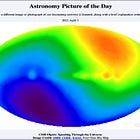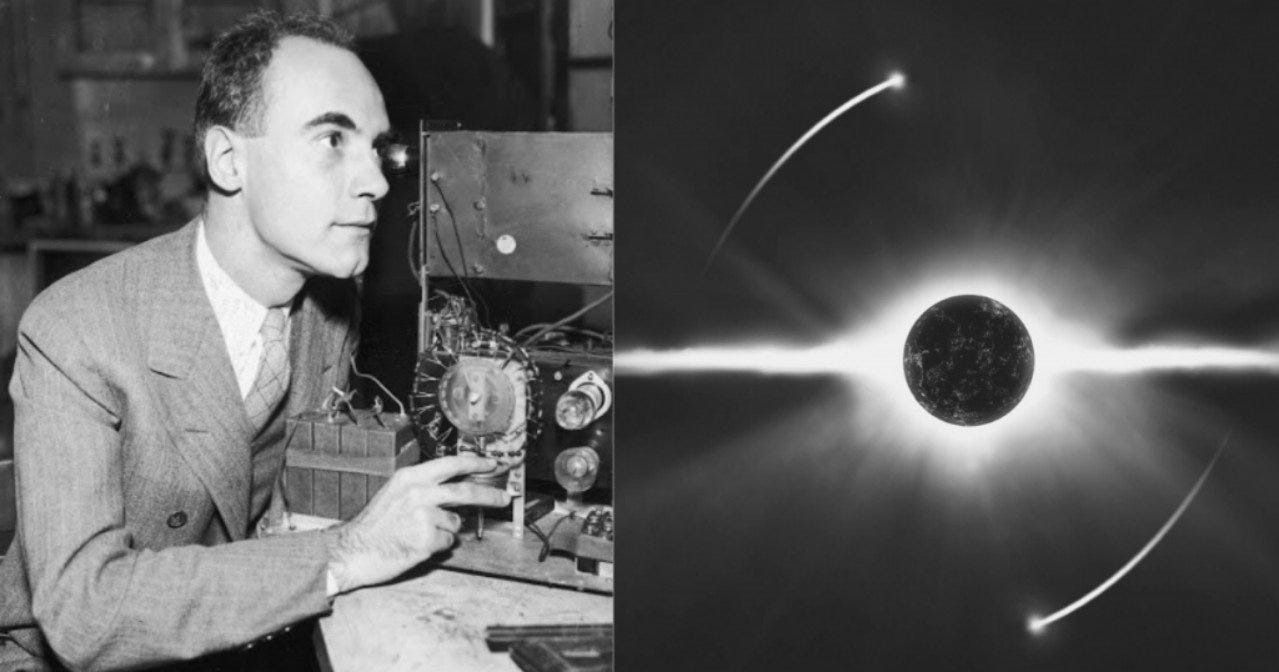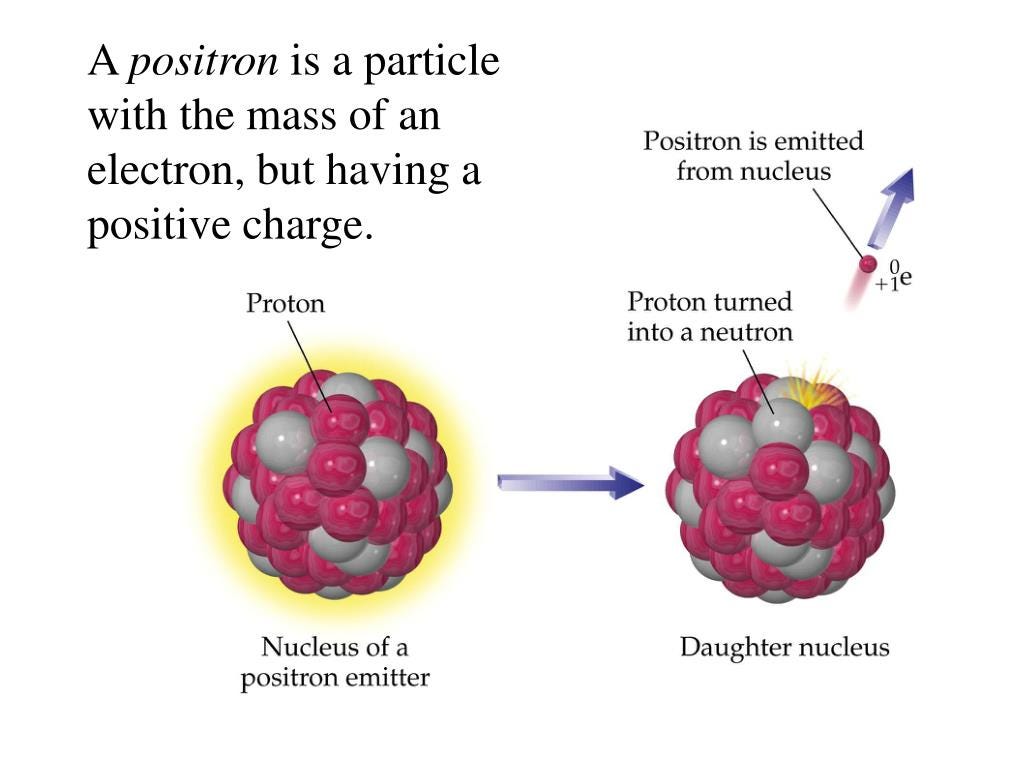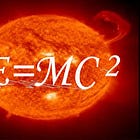Carl Anderson and the Aether. In 1932 Anderson disproved Relativity by discovering Positrons and the Plasma.
As with the Michelson Morley experiment of 1887, Dayton Miller's 300.000 disproofs, 'The Science' ignores evidence it does not like. Anderson also disproved E=mc2. Few have heard of Mr Anderson.
Einstein: “It is also necessary to criticize the fact that he [Eddington] often describes the theory of relativity as logically necessary. God could also have decided to create an absolute static ether instead of the relativistic ether. This would hold especially, if he were to adapt the ether to the (substantial) independence from matter, as in de Sitter, an opinion toward which Eddington obviously leans; because in such a case an “absolute” function should also be attributed to the ether.” (Albert Einstein, “Letter to A. Sommerfield, 28/11/1926)
Einstotle knew an aether existed. He called it ‘relativistic’ only after 1915, indicating an aether of gravitational wave action, only. In his opinion the aether was not ‘ponderable’. Hence, the claim today that ‘space’ is a ‘vacuum’. It isn’t.
In the quote above, we see Einstein disagreeing with one of his disciples and probably his most important marketer - Eddingtion. Einstein writes that maybe de Sitter et al are correct, that there is an absolute aether, or medium which is full of materiality, which propagates, light, energy, and gravitation.
Einstein’s critique in the above quote is an accurate one. The aether exists. The only debate should centre around the immobility or mobility of the aether and its entrainment, full or partial, around the Earth.
We will discuss Einstein’s complete confusion and obfuscation about the aether in a future post. Einstein’s oscillations around the aether nullifies his own theory,
Reality
As previous posts have offered space is full of particles, energy, radiation, matter, and fields. Anti-matter also exists and gives rise to the idea of a ‘plasma’ or medium of materiality in which matter is created and annihilated (next post will have more on this). Radiation by itself contains form, energy, and material.
Since the medieval period this complex of matter in space was termed an ‘aether’, a word coming from ancient Greek philosophy which identified the ‘aether’ with the air that gods breathe in the upper atmosphere. This was akin to the ‘waters’ above the firmament in the Hebrew Old Testament, a medium not of water per se, but a substance in the heavens or space, associated with the spirit of God, and the materiality around planets and orbs.
The medieval and ancient could never have comprehended what the ‘aether’ was composed of, but they intuited that it affected planetary motions and cycles. Contrary to myth, ancient and medieval ‘astrology’ is not a metaphysical exercise of unsophisticated superstition. It was a complex of maths, measurements and calculations which directly formed astronomy.
Planets do affect our planet and human life through inter-alia, their alignments and emission of electromagnetic resonance and energy. This self-evident fact is something that Einstein denied (see the Velikovsky heresy). These electromagnetic effects, along with light, sound, radiation etc. must be transmitted through a medium or aether.
Carl David Anderson
The micro-world of atoms and particles is still a recent discovery when viewed historically. The electron was discovered in 1897 by J. J. Thomson; the proton in 1911 by Rutherford, Wein, et al., the neutron in 1932 by James Chadwick, and the positron was first theoretically identified in 1928 by Paul Dirac.
The American physicist Anderson (1905- 1991) confirmed Dirac’s anti-matter (positron) theory. In 1927, Anderson had begun studying X-ray photoelectrons (electrons ejected from atoms by interaction with high-energy photons). In 1932, Anderson experimentally confirmed the existence of the anti-matter positron.
The 1932 confirmation of positrons was based on years of careful experimentation. Anderson, like many American physicists in the late 19th and early 20th centuries, was interested in experimental proofs. The Europeans to the contrary, were profoundly impressed by abstract, complex and never proven mathematics, models and thought experiments.
In the great scientific divide of the early 20th century we have the Americans with their mechanical proofs and hard facts, losing out to the European philosopher-theorists like Einstein and even Heisenberg, with their maths and arcana that no one understood. Science has never recovered. It might be hundreds of years before humans return back to what constitutes real science.
Physical evidence
In 1930 Anderson began research on gamma rays and cosmic rays. While studying photographs of cosmic rays in cloud-chambers, Anderson discovered a number of tracks whose orientation indicated they were caused by positively charged particles, but particles too small to be protons. In 1932 he announced that the particles were ‘positrons’, particles with the same mass as electrons but positively charged. Paul Dirac had predicted their existence in 1928. Anderson’s claim was controversial until it was verified the next year by the British physicist Patrick Blackett.
Anderson and Victor Heiss of Austria won the Nobel Prize for physics in 1936 for the discovery of the positron, the first known particle of ‘antimatter’. Positrons are electrons ejected from atoms by interaction with high-energy photons (or light particles). Anderson arrived at his discovery through his intensive research into gamma, x-rays and cosmic rays. In 1937, Anderson continued his work and also discover the short-lived meson. Theoretical discoveries have named some two hundred more nuclear particles, but most, like the meson, are unstable.
Gamma time, Hulk smash
In his discovery of the positron, Anderson found that when gamma radiation of no less than 1.022 million electron volts (MeV) was discharged in any point of space, an electron and positron emerged from that point. He also found the converse to be true, that when an electron collides with a positron, the two particles disappear, and produce two gamma-ray quanta which disperse in opposite directions, but with a combined energy of 1.022 MeV.
Anderson had in effect discovered the creation of matter.
One group of physicists describe his discovery:
“On August 2, 1932, Anderson obtained a stunningly clear photograph that shocked both men. Despite Millikan’s protestations, a particle had indeed shot up like a Roman candle from the floor of the chamber, slipped through the plate, and fallen off to the left. From the size of the track, the degree of the curvature, and the amount of momentum lost, the particle’s mass was obviously near to that of an electron. But the track curved the wrong way. The particle was positive.
Neither electron, proton, or neutron, the track came from something that had never been discovered before. It was, in fact, a “hole,” although Anderson did not realize it for a while. Anderson called the new particle a “positive electron,” but positron was the name that stuck. Positrons were the new type of matter – antimatter – Dirac had been forced to predict by his theory.” (Crease and Mann, ed., T. Ferris, p. 78)
An exciting discovery. As with all ‘Science’ the key is the interpretation of what happened. Given the above description a valid inference is the following:
· space is composed of a lattice of very stable electron- positron pairs,
· when the proper quanta of radiation are administered, these pairs will either temporarily deform the lattice or jolt the electrons and positrons out of alignment and release them
This is what Anderson’s discovery amounts to. There is no need to invent magical processes of ex-nihilo matter creation. But of course, such an explanation is a problem for ‘The Science’! It disproves Einstein’s Special Theory of Relativity (STR), much in vogue and well-funded by 1932, and the emerging (at that time) quantum mechanics model of the micro-universe (which also disproves STR but few are aware of this).
Anderson, like many others, had mechanically proven that space was not a void. Space and its aether contains material and lots of it. Inside the aether matter and anti-matter are created from quanta radiation.
Carl Anderson’s 1932 discovery of positrons (antimatter) and his confirmation of the aether and Dirac’s theorem, invalidated Relativity. Anderson mechanically disproved (unlike Einstotle who performed no experiments), the relativist dogma that matter can simply arrive ex-nihilo. He confirmed what English physicist Paul Dirac had mathematically theorised must exist - a positively charged electron or anti-matter.
What Anderson undoubtedly proved was that Einstein’s 1905 STR dogma, that the ‘aether’ does not exist, is fundamentally and absolutely wrong and has led the indoctrination of generations that space is a void or a vacuum. The materiality of space by itself nullifies Einstotle’s relativity theory which was an attempt to ‘relativise’ away the literally thousands of experiments from 1810 to his time, which did not find Earth mobility or a diurnal rotation. Anderson’s quite ‘ponderable’ aether also abrogates the world’s most famous scientific equation E = mc2. This equation is simply wrong. We will discuss this again in a few posts.
Bottom Line
The Anderson discovery revealed that space consists of very dense yet very stable electropon pairings, perhaps in some type of lattice or crystalline structure often called ‘plasma’. This overturns most of modern physics and cosmology.
You would expect ‘The Science’, to understand that light traveling through such a dense medium would be affected. Physics had already been forced to consider this with Einstein’s own Nobel Prize-winning theory in 1905 of the photoelectric effect, or the process by which a photon of the right frequency releases an electron from metal, confirmed by Arthur Compton in 1923.
It was therefore known by 1932 that light can be affected by, and produce, physical effects when it interacts with atomic particles. The Sagnac experiment of 1913 had also revealed that the speed of light was inconstant due to the aether around the Earth. Further, there were literally thousands of interferometer results from 1867-1932 with measured Earth mobility of 5-11 km/sec which identifies an aether.
The above should have suggested to ‘The Science’ that light was being physically affected by some kind of substance in space. This includes star light bending or aberrations, affected by both gravity and the aether.
Anderson merely confirmed what ‘The Science’ already knew by 1932, but studiously ignored - the aether exists. But I am sure everyone was taught this at ‘school’ and I am sure that all Phd’s in Physics are up to speed on their Carl Anderson….
All hail.
next post; a look at plasma and electropons
Sources
Robert Crease and Charles Mann, “Uncertainty and Complimentarity,” World Treasury of Physics, Astronomy and Mathematics, ed., T. Ferris, 1991.
James Clerk Maxwell, A Treatise on Electricity and Magnetism, 1873
Jonathan Katz, The Biggest Bangs, 1999
Paul A. M. Dirac, Proceedings of the Royal Society A, 117, 610 1928
Stephen Hawking, Black Holes and Baby Universes, 2011
M. Simhony, An Invitation to the Natural Physics of Matter, Space, Radiation, Singapore, New Jersey: World Scientific, 1994
Electron-Positron Physics at the Z, “Series in High Energy Physics, Cosmology and Gravitation,” M. G. Green, Royal Holloway and Bedford College, UK, January 1998
Robert B. Laughlin, A Different Universe, 2005







